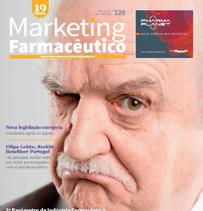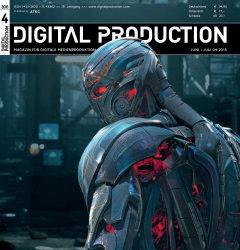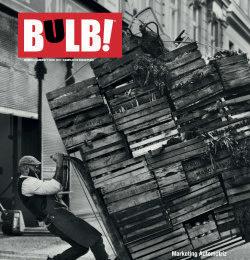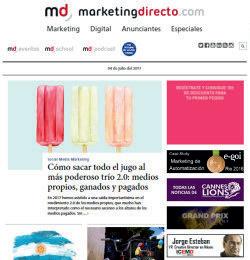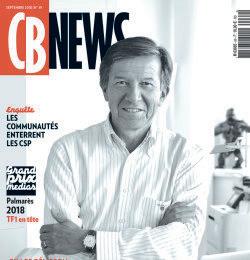THE CREATIVE PRIZE JUDGED BY JOURNALISTS
Human creativitY WILL ALWAYS PREVAIL
McCann Worldgroup was Network of the Year at the Epica Awards for an amazing sixth time. Javier Campopiano, Worldwide Chief Creative Officer, shares his thoughts on the press, advertising and ideas.
 By Mark Tungate
By Mark Tungate
Our conversation begins with a writer. Javier Campopiano is from Argentina, so I can’t resist mentioning that one of my all-time literary heroes is Jorge Luis Borges, master of the fantastic tale. “A visionary,” Javier agrees. “Have you read The Aleph? In that story, Borges more or less predicts the internet.”
This brief digression allows me to segue neatly into a question about Epica’s jury of journalists, all storytellers in their own right. “You know, our two industries have perhaps never been closer than they are right now,” Javier observes. “We’re both having to navigate what might be called the ‘post-truth’ era, juggling the need to inform people with the obligation to be authentic.”
A First Class
Train
The creative idea could have been achieved using visual effects. Instead, the Film Grand Prix winner took a more beautiful route.
The feeling that “The Train of Memories” might win the Film Grand Prix at the Epica Awards emerged quite early, when members of the jury began enthusing about it on LinkedIn. The film depicts a father and daughter on their daily commute from the suburbs to Tokyo, over a period of 12 years. As the camera pans back, we see the duo growing older, and somehow further apart. In the end, the daughter is left alone as she heads off to university.
The music, the lighting and the poignant storyline all make the film compelling. But the key to its magic lies in a bold production choice. Instead of using
special effects to artificially age them, the father and daughter are played by a total of 50 different actors. This analogue choice in a digital age gave the film an extra touch of poetry. We asked Yuta Okuyama, Creative Director at production company SIX INC, how it came about.
What was the original brief from the client, SOTETSU?
SOTETSU, a Japanese railway company serving Kanagawa Prefecture since 1917, aimed to promote its newly established direct through service to central Tokyo via the Tokyu Line, a long-awaited achievement. The objective was to highlight
He points out that advertising in the past had an advantage in that its borders were clearly established. “On television you had a commercial break, so there was no doubt that you were about to see some ads. In a newspaper, a print ad was a print ad. But now those borders have become very much blurred. So in both cases, you need people to uphold standards and ensure nobody is being misled.”
A jury of journalists, he suggests, provides that level of scrutiny. “It’s a different eye on our work, which for us is very valuable.”
He adds that both industries have been disrupted by technology, a process that’s ongoing thanks to AI. “AI is being greeted with a mixture of excitement and fear.
There are issues of intellectual copyright, there are worries about how it’s going to impact our careers…Here at McCann, we are taking an optimistic approach. We’re working with AI, as are many of our clients. But it’s important that we see it as a tool. If you ask me about the future, I’m inclined to think that human creativity will always prevail.”
“I’m not the kind of CCO who takes credit for things I didn’t do. “
McCann Worldgroup’s creativity is certainly in no doubt, bearing in mind its stonking 26 awards at Epica, including three Grand Prix. “I’m taking zero credit for that, by the way,” emphasizes Javier, who arrived at McCann in September 2023. “I’m happy to talk about it, but I’m not the kind of CCO who takes credit for things I didn’t do.”
A very creditable stance – and yet as our chat progresses, it becomes clear that Javier symbolizes the human approach that allows McCann to do such award-winning work. This stems in part from his background.
Continued on page 2

seamless access from Kanagawa suburbs to downtown Tokyo, positioning it as an ideal settlement for families.
How did you collaborate with the agency, Hakuhodo, on the creative idea?
The creative concept was chiefly developed by the creative team of SIX and Hakuhodo.
Creative director Yuta Okuyama and film director Show Yanagisawa collaborated closely, merging their expertise from the initial planning stages.
Why did you decide to use real actors rather than special effects to age the man and his daughter?
Continued on page 2
Continued from page 1
THE EPICA AWARDS TRIBUNE
We focused on one-cut filming instead of filming the same pair numerous times. Because life is like a one-cut film: time flows only in one direction like a river and cannot be partially retaken or replaced. Just as life progresses linearly, we wanted to evoke the irreplaceable essence of each moment.
How did you cast the different actors involved?
Casting presented the challenge of finding 24 lookalikes for each lead actor, requiring extensive casting calls spanning over 1000 actor agencies. Especially meticulous was the casting for the daughter’s role, necessitating multiple sessions to match various criteria, including age-specific physical attributes and acting proficiency.
How long did it take to shoot the film, and what special techniques did you use?
Continued from page 1
“I come from a market, Argentina, where the best creative work always had amazing human insights at its core. As we were always short of budget or short of media, those insights were what allowed the work to travel and made the impact of the idea much bigger. That pretty much
2024 SEASON: CATEGORIES ADDED
By popular demand or to stay on page, here are five more opportunities to shine next season:
THE CREATIVE PRIZE JUDGED BY JOURNALISTS



shaped my way of approaching creativity as a copywriter.”
A second element was an emphasis on “truth”, he says. “When a creative came to me with an idea for a piece of work, I’d always ask, ‘Is this true, or not?’ It’s as simple as that. We can’t put stuff out there that’s not true. That doesn’t mean it has to be real,” he underlines. “Of course the idea can be brought to life in a symbolic or surreal way – but it has to be true at its core. Even if it’s an opinion, it has to be a truthful opinion.”
While ample time was devoted to pre-production, filming was completed within a day. We employed 25 hand-powered car props and manually moved them to recreate the train’s winding movements, expressing the swaying emotions of the father and daughter over the years. Additionally, the lighting crew employed light shades outside the makeshift train to replicate the interplay of light within, symbolizing the passage of time.
What are your thoughts on winning numerous awards for the film?
It’s truly an honour for a local train line advertisement in Japan to receive global recognition. Personally, I find it incredibly rewarding to see how the film resonated with audiences worldwide, highlighting the universal experience of parents navigating the bittersweet journey of watching their children grow.





Cultural Insights
Work that leverages local customs, practices, and beliefs to craft messages that resonate authentically within specific communities or regions.



Brand Activations
Innovative tactics to interact directly with audiences, focusing on dynamic engagement methods that prompt immediate consumer action and deepen brand connection.


Influencer & Creator Marketing
Campaigns relying on influencers or content creators to amplify brand messages, engage audiences, and drive marketing objectives across social platforms.
During his move from Grey to McCann Worldgroup (the latest step in a career that has embraced Ogilvy, JWT, Saatchi & Saatchi and FCB, as well as multiple awards) it was one of the elements that appealed to him. “That’s the McCann motto: ‘Truth Well Told’. So it was a no-brainer for me. I had to come and work here, because I think it’s the best philosophy in our industry. The greatest ideas come from a human truth. I’m a hard core believer in that championing human truth is more important than ever right now.”
“Championing human truth is more important than ever.”



Humanitarian Aid
Focuses on war, conflict zones and disaster relief, including support for affected populations and emergency preparedness.


MENTAL HEALTH & WELL BEING
Mental health awareness, emotional health, well-being campaigns, and support for communities affected by social, environmental, or other stresses.
In craft, Direction & Cinematography is now split into two categories, while in digital, Apps & Games disappears, to be merged with the Mobile Campaigns category. Find the full category list on our website.

It’s notable that some of the best work McCann put out last year, while no doubt springing from a human truth, doesn’t feel like “advertising” in the strict sense of the word. A break room for food delivery workers, a lost alphabet, a digital platform for refugees: these are not really ads.
“Actually I think all this is advertising,” disagrees Javier. “It’s just a direction that the advertising industry is taking. For example, it made sense for Chick-fil-A to create ‘the brake room’ because of the role the brand plays in the lives of its delivery force and its customers. ”
He observes that the work McCann does for Mastercard is also a creative expression of the brand’s mission of financial inclusion. “It’s a solution, if you will, but it’s also a creative articulation of the role that Mastercard plays in its customers’ lives. It comes from a creative place. I know people like to find different names for things these days – but for me it’s all advertising.”
He jokes that our culture is always trying to pronounce the end of things. “You know, ‘rock and roll is dead’. Of course rock and roll isn’t dead! To me, Miley Cyrus is rock and roll. And advertising isn’t dead either.”
He agrees that “this thing I learned to do” can now be expressed in many diffe-
rent ways, because “the playground has gotten bigger and more interesting, and technology has given us more tools”, but the task remains fundamentally the same. “We have to keep finding narratives that enhance the mission, the vision and the role of brands in the world.”
The most challenging part, he suggests, is choosing which of the many available platforms works best for the brand. “When I studied in America I always said I didn’t like the expression ‘think out of the box’. Because I believe our job is to define the box, then do a lot of amazing things in there. It’s even more important today, because we can go anywhere with an idea, we can do anything! So first, choose your box. Then the real fun can start.”
THE EPICA AWARDS TRIBUNE
THE CREATIVE PRIZE JUDGED BY JOURNALISTS

Cooking up a mammoth meatball
Bas Korsten and Jasper Korpershoek share the story behind one of last year’s most mind-boggling campaigns.
Occasionally a campaign transcends advertising to become headline news. That happened on a grand scale with “the mammoth meatball” from VML (still Wunderman Thompson at the time), which generated reams of media coverage when it was unveiled in early 2023.
It’s true that the concept was compelling: to demonstrate the possibilities of lab-grown meat, scientists created a hunk of mammoth meat from the DNA of the extinct woolly creatures.

The idea sprang from the minds of Senior Creative Jasper Korpershoek (now at Dentsu Creative) and Bas Korsten (recently named Global Chief Creative Officer Innovation & EMEA CCO at VML). Bas has form when it comes to making headlines, as anybody who recalls “The Next Rembrandt” from 2016 will attest.
As scientists don’t have the full DNA of the woolly mammoth, the team at Vow and the University of Queensland used African elephant to complete the genome. Cells containing an abundance of mammoth information were isolated and grown in a bio-reactor until there were 20 billion of them.
If all this sounds familiar, you may not be surprised to learn that “Welcome to Jurassic Pork” was one of the headlines generated by the initiative. Jasper adds, “Before we got to the mammoth meatball, we thought about dodo nuggets or T-Rex T-bone steaks.”
There were a lot of obstacles along the way, not to mention late night and early morning video calls with Australian scientists, who had to explain everything to the laymen in metaphors. “They’d say: ‘It’s like a Mazda with a Toyota engine, but in the back’,” Bas recalls.
They also had to decide on the size of the resulting meatball. “In the end we used Jasper’s head as a rough guide.”
As the meatball would be transported from Australia for the live unveiling, test meatballs were created to see if they’d survive the journey – and the scrutiny of customs officials. It must have gone smoothly because they ended up languishing in Wunderman’s Amsterdam office. None too fragrantly, I’m told.
A media feeding frenzy
Ironically, the mammoth meatball landed in the midst of a sudden wave of concern about artificial intelligence.
But…mammoth meat. How on earth did that crop up in conversation? Jasper explains: “It was inspired by a couple of developments. A few years ago Mosa Meat here in the Netherlands produced the first lab-grown hamburger from cells. That was one thing. The other was genetic rescue, which uses genome editing to revive extinct creatures.” There’s been talk about resurrecting the passenger pigeon, for example, and even the dodo.
Splicing those two developments together started the five-year journey towards the mammoth meatball.
Leaping a genetic gap
Most lab-cultured meat pioneers weren’t interested in producing prehistoric flesh: their goal was to replace familiar fare like beef, pork or chicken. Enter Australian start-up Vow, which was excited by the prospect of growing exotic meats and became Wunderman’s partner on the project.
Bas says: “While one technology allows you to recreate the DNA of extinct species, the other starts with the cell of an animal. So there’s a missing gap between the two. And the gap is carrier cells.”
“It became a machine for generating funny headlines,” Jasper recalls. Bas adds: “One of the things we liked the most was the way normal people took the story and ran with it, creating memes and TikToks.”
The mammoth meatball was talked about in schools and at family dinners. Lab-grown meat had never been discussed so widely. Vow was delighted with the coverage because it shed light on a serious subject. Livestock has made a large contribution to climate change. Lab-cultured meat represents an alternative to slaughtering animals and a source of food for an overcrowded planet.
I wonder aloud how the meat and livestock lobby feel about all this. “I haven’t seen any negative reaction from the meat industry,” says Jasper. “We’re a long way from replacing meat, but this could exist alongside it.”
Bas adds: “For me the whole project confirms our belief that nature is no longer a limitation – the only limitation is our imagination. Which I know worries some people.”
He promises more “weird ideas” to come, however. “They’re important because we’re a creative agency, and creative confidence is an impalpable thing. If successful projects like this mean that one of our creatives can walk a little taller into a client meeting and say, ‘I believe in this idea, we should do it!’ – that’s invaluable for a company like ours.”
The unveiling was carefully orchestrated – by global PR lead Jessica Hartley – with The Guardian getting an exclusive and the meatball given VIP treat-
The meatball became an oddball celebrity, going on tour in special travelling container. You may have caught a glimpse of it in Cannes.

ment at a revered Dutch science museum: the Rijksmuseum Boerhaave. Once the news was out, it trampled its way across popular culture, firing the imaginations of journalists and the public. Despite zero media spend, the story has so far notched up the equivalent of 120 million dollars of advertising spend.
Bas concludes: “This is what gets us fired up in the morning. We want to inspire our clients. If we’re going to do that, it’s important for us to be leading in places where no client has gone before.”
Editor’s note: this article appeared in a slightly different form on the Epica Awards website in April 2023
THE EPICA AWARDS TRIBUNE
THE CREATIVE PRIZE JUDGED BY JOURNALISTS
Hope&Glory PR orchestrated a press campaign that drew attention to a taboo subject and a photography exhibition with a heart-rending message.
The tragic secret behind the smiles
They’re the kind of photos everyone has: friends and relatives, smiling and laughing; at birthdays, on the beach, around a table. But these pictures are different. Because the main subjects in every image took their own lives shortly afterwards. This was “The Last Photo” ever taken of them.
The pictures lay at the heart of a PR campaign run by the agency Hope&Glory for the suicide prevention charity CALM (which stands for Campaign Against Living Miserably).
The fact that the people who took their own lives appear to be happy is the entire point. It turns out we only think we know what “suicidal” looks like.
Don Ferguson, deputy managing director at Hope&Glory, says he became aware of CALM in 2018, when the charity was still focused on male suicide. “They ran an amazing campaign called Project84, with 84 statues of men standing on the ITV Studios building beside the Thames.
worked with CALM, primarily on a pro bono basis. “We became their de facto PR agency. We love working for brands, but when you can do work that might save lives, that’s a whole different story.”
Reading the room
The thinking behind what eventually became “The Last Photo” initially pointed in a very different direction. Planned as a sequel to Project84, the new Project125 would reflect the fact that CALM was now a general suicide prevention agency, rather than focusing on men.
Among the ideas proposed by creative agency Adam&EveDDB (who worked on the final concept with media planning agency the7stars and Hope&GloryPR) were initiatives like the installation of gravestones in central London. Don says:
“I remember vividly the conversations around that idea. We’d just emerged from Covid, and the Ukraine war had just broken out, so we had to ‘read the room’. We decided this wasn’t the way to go.”
Don says Adam&Eve’s inspiration for “The Last Photo” was an Instagram

It referred to the average of 84 men a week who were taking their own lives.”
The agency became involved with CALM during the first week of lockdown in 2020. “There was a lot of despair in those early days,” recalls Don, “and we were looking for ways to help. We knew CALM’s marketing director at the time, Ben Hawley, so we got in touch and pitched an idea.”
This was The CALM Lock-In: “If you can’t go out, we’ll bring the pub to you.” From 7pm until 1am there were quizzes, cooking demos and DJ sets, all run by celebrities. Participants were encouraged to donate, which funded the extra personnel needed to staff the charity’s rammed phone lines. Next up, there was a Mario Cart tournament sponsored by Nintendo. Since then, the agency has regularly
picture of the comedian Robin Williams, apparently happy, with his pet monkey. Williams took his own life 20 days later. This evolved into an outdoor photography exhibition with a twist.
“Adam&Eve were at the creative heart of the campaign, but our role was about ensuring that it became widely talked about across the press. Particularly, we wanted to share the individual stories behind the images, because those really give you that gut punch.”
The big reveal
Broadcaster ITV revealed the theme of exhibition live on air. “When the exhibition first appeared, there was no explanation. It just said ‘The Last Photo’.
There were QR codes, but they didn’t lead
anywhere. People walked past looking at the photos for two days. When the news was revealed live, the QR codes with each individual’s story came to life. The contrast between the stories and the smiling faces had a tremendous impact.”
Celebrity dancer Shirley Ballas, head judge on the TV show Strictly Come Dancing, had submitted a photo of a loved one for the exhibition and helped drive media interest. Other famous CALM ambassadors also contributed by sharing their experiences and mental health battles. Some family members who had donated photos spoke to the media.
CALM’s internal team had helped to select the families – but even then, the subject was so emotional that some chose not to participate at the last minute. “We were very respectful of that. I’d say that choosing the families was actually the hardest part of the campaign. The target was 50 diverse stories, giving a broad representation of what this is like for different people.”
The campaign’s mission was to get people talking. Research commissioned by Hope&Glory and shared with the media suggested that few people knew how to detect the signs of potential suicide –and still less initiate a conversation about it. “The main message was that talking about this is a preventative measure. Yet it’s something that’s still viewed as stigmatic in society.”
A lasting impact
In order to smash the silence, Hope&Glory wanted to reach as many media platforms as possible. “We were trying to create a mass movement,” Don says. The campaign broadened CALM’s audience by attracting more media aimed at women. Generally, though, journalists got the picture.

“I was almost surprised by the sheer amount of media that wanted to cover the story,” says Don. “But on the other hand, it made sense. One in every five people has suicidal thoughts, so this affects all of us. There was none of the usual in-fighting with the press – you know, The Times won’t run it because the Telegraph have got it. Everyone wanted to do something.”
Within the agency, staff are given the option of working with CALM or not, given that it’s such an affecting subject. But Don says many of the core team have personal experience of the issue, and were the most motivated to contribute. “Of course it’s an upsetting subject, but the positive output is so rewarding.”
The next step for CALM is to focus on “survivorship”. “If you can show people who’ve come back from an attempted suicide, or suicidal thoughts, you actually give hope to others. Part of our job now is to tell those stories.”
Throughout all his years in PR, Don says he’s rarely seen a more enthusiastic team than the one that worked on “The Last Photo”. “Adam&Eve, the7stars, ITV, ourselves – we all threw everything at it. At the end of the day, that’s what made it such a great campaign.”

THE EPICA AWARDS TRIBUNE
THE CREATIVE PRIZE JUDGED BY JOURNALISTS

Using data to solve a refugee crisis
As more than 1.5 million Ukrainians poured into Poland, McCann and Mastercard helped to avert chaos with a digital innovation.
Europe hadn’t seen anything like it for more than 80 years. A mass migration of refugees, pouring across the Polish border from Ukraine as they scrambled to escape the Russian invasion. Some Polish people felt alarmed, others helpless. And many others wanted to help.
Among the latter was McCann Poland, which quickly began working with the network’s long-term client Mastercard. The result was “Where To Settle”, a digital platform eventually used by more than
McCann Poland Managing Director and Executive Creative Director Marcin Sosiński recalls the atmosphere in Poland at the start of the invasion. “There was a massive movement among Polish citizens. They used their own cars to pick up refu-
“We knew we needed to do something.”
gees at the border, they welcomed them into their homes. So we knew we needed to do something.”

20 per cent of the refugees, which enabled thousands of them to start new lives. By using data to direct them to smaller cities where they were more likely to find homes and jobs, it avoided turning Warsaw and other large agglomerations into giant refugee camps.
He points out that Mastercard and McCann employees in Poland invited people from the companies’ Ukraine offices to stay in their homes. “Everyone wanted to get involved. This idea came from our collaboration with Mastercard, and previous projects we’d worked on involving data. After collaborating with
a working tool as quickly as possible, to help the refuges relocate, then as time went on we added layers.”
How did it work concretely? Surely not all the refugees had a smartphone?
“Honestly, we didn’t find that to be a problem,” says Marcin. Smartphones, even in their most basic form, are ubiquitous today. “There was also a website version, so getting access to the app wasn’t an issue.”
Anna adds: “All the communication was in Polish, Ukrainian and English from the very beginning, so we were prepared. And we were working with NGOs that were supporting Ukrainians, which helped us to spread the news about the tool.”
Mastercard for such a long time, we don’t need a specific brief. We always know that we want to position Mastercard as a company that uses technology creatively, rather than one that just provides credit cards. We acted in accordance with Mastercard’s ‘data for good’ mission.”
The app was an indisputable success, preventing a logjam of refugees in big cities by spreading the settlers evenly and giving them a fresh chance, away from violence. “While an obvious city like Warsaw might have become overcrowded, with rents rising and competition for jobs, which causes tension, there were smaller towns that positively welcomed refugees, because there were jobs to be done and positions to be filled,” says Marcin.

The solution was to use everyday transaction data to identify the easiest places for refugees to find homes and jobs. Account Supervisor Anna Sokołowska says: “The data gave an estimate the cost of living in each place, based on the average spending there.” The figures included transport costs, the price of groceries, the typical size of families and other factors. “It showed how much the refugees would need to earn in order to live in those specific places.”
All the data Mastercard uses is aggregated and anonymous, so there were no privacy issues. Similarly, the tool did not track the identity of the refugees or where they decided to settle.
Incredibly, the first version of the platform took only five weeks to develop. “It’s really crazy – and I’m very grateful to everyone who worked on the project. Kudos to all those who were manually coding to get this done in record time,” says Marcin. “We wanted to come up with
Now Mastercard and the agency want to “escalate”, expanding the platform to other countries that have a high influx of refugees.
Marcin says: “What I like very much about this work is that we aimed to change the perception of refugees and make people realise that they are not a threat. They are useful to every economy. It’s a conversation we should all be having, especially
“If you enable refugees to settle in places where they are needed, the overall perception becomes positive.”
as refugees are often used as ‘weapon’ by right wing parties to spread fear. If you enable refugees to settle in places where they are needed, the overall perception becomes positive.”
THE EPICA AWARDS TRIBUNE
THE CREATIVE PRIZE JUDGED BY JOURNALISTS
The Superpower of Generosity
McCann New York was named Agency of the Year at the Epica Awards. Shayne Millington, Chief Creative Officer, tells us how the agency ensures there are no brakes on creativity.

It’s not often that a single agency manages to reap two major prizes from a roomful of skeptical journalists. McCann New York pulled off the coup with relative ease thanks to two very different projects: “ADLaM”, for Microsoft, the Design Grand Prix, and “The Brake Room”, for Chickfil-A, the PR Grand Prix. One saved an alphabet – and with it an entire culture – and the other gave the city’s hardworking food delivery couriers a shelter from the elements.
“It’s an honor to be recognized by the ‘truth tellers’ of the world, especially since our motto is Truth Well Told,” observes Shayne Millington, Chief Creative Officer. “It’s one thing to be honored within the creative community, but to have our work recognized by journalists who have an outside perspective gives us another reason to hold our heads up high.”
Avoiding the soup
As we all know, McCann Worldgroup is a strong network (it was also Epica’s Network of the Year). But does the New York agency have a specific dynamic given its location?
“Well, we’re in the best city in the world –as any New Yorker will tell you,” Shayne replies, with a laugh. “It’s also one of the most diverse cities, which opens us up to so much creativity and talent. It allows us to see things from many different points
of view. It’s really a beautiful microcosm.”
The agency strives to reflect that vibrant mix internally too. “We’ve never asked anyone to blend in or fit the mold. We like them to come with their unique talent and then raise that up. I often say it’s not a soup, it’s a salad.” She laughs again.
“It’s maybe not the greatest metaphor, but you see what I mean? A soup blends everything together, where a salad is made up of distinct elements.”
“It’s one thing to be honored within the creative community, but to have our work recognized by journalists who have an outside perspective gives us another reason to hold our heads up high.”
Even on a computer screen, Shayne exudes the passion and enthusiasm of a natural creative. She’s also creative in her spare time, as a photographer. “Let’s say I dabble in it. I don’t want to say ‘I’m a photographer’, because it’s more of a hobby. But I do love photography. Even with my children, as they were growing up I always made sure they had a camera. I wanted to see how they were experiencing the world.”
She approaches professional creativity in a similar way. “What inspires me the
most is getting out and talking to people. I really like to get to know them and connect on a deeper level. That’s what helps me create work that comes from different perspectives.”
Saviors of a lost alphabet
There could hardly be a more different perspective than the “ADLaM” project, which sounds more incredible each time it’s described. In short, the Fulani people of West Africa had a purely oral language –called Pulaar – that existed as an alphabet only in a series of notebooks hand-written by two brothers. Microsoft and McCann learned of them and proceeded to digitize the alphabet, bringing it into the wider world and essentially allowing it to live.
“I found out about the brothers a while ago,” says Shayne. “They are spectacular individuals. They started creating the alphabet in childhood, so it’s something they’ve been working on for their entire lives. We reached out to them to find out what the main challenges were with the language and how it might be fully digitized and used within the community.”
She points out that this is the latest in a series of mindful projects Microsoft and McCann have collaborated on over the past five years – you may remember the Xbox Adaptive Controller, designed for gamers with limited mobility. It’s a co-creative approach.
“I don’t think there are a lot of clientagency relationships like this. The line between us is blurred, to say the least. On this project, for example, we needed type designers. We have type designers in-house, so they were able to work with Microsoft to optimize the alphabet.”
The challenge was to take the brothers’ hand-drawn alphabet and adapt it for maximum legibility. “We had to find out what the hang-ups were: for example, three letters might look too alike. And after all that, we had to bring the alphabet out into the community, to make sure people were writing with it. Otherwise, it would have sat dormant. So McCann Design created educational and learning tools for schools.”
From a language that was invisible, Pulaar became an alphabet that will enable novels, articles, poems, screenplays – the expression of an entire culture.
A place of their own
Meanwhile, “The Brake Room” is an urban project that feels very New York. It also sprang directly from the client’s core values. “Chick-fil-A is family-owned company whose whole philosophy
is around ‘care’,” Shayne says. “But ‘care’ doesn’t mean just caring about the food. With the rapid growth of food delivery, we started to think about how delivery workers were being cared for. They’re performing physically demanding tasks in often extreme conditions. So we gave them a place that covered the basics we all need: shelter, a bathroom, a coffee. Showing them that somebody cares.”
It’s a very non-advertising solution. Or is it? “Today, if you’re a food company, the face of your company is increasingly the delivery workers. If you don’t care for all your staff, including your delivery workers, that’s going to impact the way customers experience your business. But the simple fact is that, once we understood what these unsung heroes were going through, it became something we couldn’t ignore.”
The initiative had such a profound impact that other brands have begun adopting the idea – and the New York City Council is looking into it as well.
“We need that moment where we challenge the work.”
Talking to Shayne, you’re given the impression of an agency that’s thoughtful on many levels, from the work it puts out to the way it treats its clients and teams. Earlier in our conversation, she’d summed this up. “We always say that our key values are generosity, kindness and ambition. And I think the strongest may be generosity. Generosity of time, ideas and spirit. That’s why we have people who’ve stayed here so long, because they feel as though they’re valued – and that they’re part of a community.”
The people connection, again. The agency may have a New York vibe, but it’s also embraced post-pandemic hybrid working. “Creativity needs flexibility,” says Shayne. “If we’re still having rich debates, and pushing the work, then we can be adaptable. But whatever happens, we need that moment where we challenge the work.”
This basically means getting together, scrutinizing the work, and asking if it’s the best it can be. There’s also a twice-weekly Cultural Resonance Committee which, as its name suggests, ensures the work is pertinent and respectful to its intended audiences.
“The only way of raising the level of what we do is to constantly challenge the work,” Shayne emphasizes. “That’s what makes it great.”
Award-winning, in fact.
THE EPICA AWARDS TRIBUNE
THE CREATIVE PRIZE JUDGED BY JOURNALISTS

Nurturing a love of great ideas
Rethink was Independent Agency of the Year at the Epica Awards with the help of a very special print campaign.
The Canadian agency Rethink has previous at the Epica Awards. It regularly notches up Golds – and in 2022 it won Agency of the Year, as well as a Digital Grand Prix with a highly prescient AI project for Heinz. This year it returned to scoop Independent Agency of the Year.
One of the keys to Rethink’s success (and I’m sure we called it “the secret sauce” last time around, too) is its very own operating system, against which all campaign ideas are measured. It’s called CRAFTS, which
Rethink was our indie agency of the year, but Canada in general did really well in the Epica Awards. What’s the Canadian formula that appeals to awards juries?
Mike: I think the fact that Canada is a very multicultural country allows us to have different and unique perspectives. We have something of a global mindset: the insights and observations feel relatable to someone halfway around the world, as well as down the street from us.
A lot of Canadian advertising has a light and humorous touch that’s very appealing to audiences – and awards juries.
Aaron: It’s so cold here that you need a sense of humor. Interestingly, if you look at Hollywood actors and actresses, particularly in comedy movies or sitcoms, there’s an absurd amount of Canadians. Ryan Reynolds, Seth Rogan, Will Arnett, Jim Carrey…I could go on. Canadians have a naturally self-deprecating sense of humor – and they like to make each other laugh. But they also seek external validation. They like to make it big out there. And I think it’s the same with our advertising. We want our ads to be famous.
“Heinz Ketchup Fraud” was particularly popular with jurors. How did that idea emerge and how did it the restaurants take it?
Mike: When we were first talking about the idea, it could have been perceived as a negative for the brand. It was showing the brand’s labelled bottles, with generic ketchup inside them. Plus there was the relationship with the restaurants. The tone was really important: it couldn’t be seen as an antagonistic finger-point. It was more of a rallying cry to consumers. The fact that we asked consumers to name restaurants where this had happened actually became a business-to-business opportunity for Kraft-Heinz. They won restaurants back. To give just one example, Fenway Park (baseball stadium) became a customer again, which was a huge win for them.
Aaron: Clients will often ask: “What’s to stop another brand slapping their logo on this?” But this was an insight that specifically concerned Heinz.
the bottom of the image. When we moved the text up to make it level with the Heinz bottle, suddenly the whole thing jumped off the page. It took it to another place. I think that speaks to the value of craft, when a gesture as straightforward as moving a line can make a campaign.
We spoke a lot about your relationship with Kraft Heinz last time – but your work with IKEA also performed well this year. What is it about IKEA that inspires consistently creative work among its agencies?
Aaron: They’re one of the world’s most creative companies. It starts with democratic design, and the smartness and efficiency of their products. They’re always devising creative ways of making people’s lives better, or making the products inexpensive. And that creative culture is present in every aspect of the company, from marketing to legal. It’s why they’ve been winning so many awards for so many years now. They’re truly inspiring.
Mike: If you meet anyone from IKEA, whether it’s the staff in the stores or the brand team, they put an emphasis on taking care of people. And I think that thoughtfulness and “care” translates into the work. It’s a fun, accessible, optimistic culture. Plus the products are different and interesting. All those elements have resulted in a body of creative work that continues to inspire any agency that works with them. IKEA is the kind of brand you dream about working with when you’re at ad school. The bar is already very high, so our challenge is to try and elevate it even further.
The Ramadan Iftar Bar was a lot of fun. Can you talk a little about the genesis of that project? It feels like a very open thing for KitKat to do.
Aaron: This actually began as a passion project by an art director in our Vancouver office. He saw that, in North America, Ramadan was not as celebrated or talked about as holidays like Christmas and Easter. He also saw the natural fit between KitKat and what they stand for – “Have a break” – and Ramadan. He shared his idea with us, we shared it with the client, and that’s how the whole thing began.
stands for Clear, Relevant, Achievable, Fresh, True and Shareable. As you’ll see, this year’s outstanding Heinz campaign hits all the marks.
While Rethink is clearly at the head of the pack, it appears there’s something highly creative about Canadians. We tried to unlock the mystery by posing a few questions to Mike Dubrick, CCO and Partner, and Aaron Starkman, CCO and Managing Partner.
The starting point for the whole thing was a print campaign, which is quite rare these days.
Mike: With every campaign, we choose the medium that feels right for the idea. Print felt like the most powerful way to express this insight. But because of the simplicity of the idea, we knew we had to double down on the craft. We wanted something that felt authentic and observational, but was elevated by an aesthetic polish. By the way, we already had that good line – “Even when it isn’t Heinz, it has to be Heinz” – but it was originally at
Mike: As an agency we’re constantly looking for opportunities for clients to do something that they haven’t traditionally done before, or explore a new way of thinking. So it was exciting to be able to bring this to them – and they were just as passionate about it as we were.
Aaron: At Rethink we promise our clients and our people, “You will do the best work of your career here.” To live up to that, we need famous work to happen often, and quickly. And sometimes that means not waiting around for briefs. We want our people to be so in love with good ideas that they’ll dream them up just for fun. That’s the culture Mike and I try to create.
THE EPICA AWARDS TRIBUNE
THE CREATIVE PRIZE JUDGED BY JOURNALISTS
2023 GOLD WINNERS



NETWORK OF THE YEAR
Rethink with three Grand Prix, five Golds, ten Silvers and eleven Bronzes
Top agencies:
1. McCann Worldgroup
2. VML
3. Publicis

GRAND PRIX
FILM: SIX INC “A Train of Memories”
DIGITAL: McCann Poland “Where to Settle”
INNOVATION: VML Belgium “The Mammoth Meatball”
PR: McCann New York “The Brake Room”
RESPONSIBILITY: Hope&Glory “The Last Photo”
AGENCY OF THE YEAR
Rethink with two Grand Prix and two Golds
Top agencies:
1. McCann New York
2. Hope&Glory
3. Rethink

INDEPENDENT AGENCY OF THE YEAR
Rethink with two Golds, four Silvers and seven Bronzes
Top agencies:
1. Rethink
2. Zulu Alpha Kilo
3. DEPT
Agency Title Category Advertiser
Accenture Song Germany "Designed In Bangladesh. Made In Europe." Product Design ekn footwear
AustralieGad "As Far As The Eye Can See" Creative Use of A.I. Optic 2000 - Lissac - Audio 2000
BBDO Bangkok "My Parent Is A Tiktoker" Online & Viral Films CPF Restaurant and Foods Chain Co.
BETC Havas "Petra Milk"
DDB Italy "Hungry For Culture"
DDB Italy "Hungry For Culture"
Dentsu Creative "Scrolling Therapy"
Dentsu Creative "Scrolling Therapy"
Dentsu Creative "Scrolling Therapy"
FCB Artgroup Almaty "Now You See."
Alcoholic Drinks Grupo Petrópolis
Direct Marketing Bennet
Retail Services Bennet
Mobile Campaigns Eurofarma
Prescription and OTC Products Eurofarma
Social Networks Eurofarma
Public Interest – Gender Equity KazFem
Fork Unstable Media "Shoah Memorial Frankfurt" Websites Jüdisches Museum Frankfurt
Foundry Group "Primal"
Foundry Group "Primal"
Giants & Toys "Before It'S Too Late"
Grabarz & Partner "Charles Iii – The Burger King"
Best Use of Sound Sennheiser Brand (Sonova Group)
Personal Electronics & Devices Sennheiser Brand (Sonova Group)
Films & Series Stockholm Stadsmission
Topical and Real-Time Burger King
Havas Paris "Aéroport Anne De Gaulle" Transport & Tourism Fondation Anne de Gaulle
Havas Play "Adopt A Mod"
HEIMAT
"The Square Meter"
Apps & Games La Société Protectrice des Animaux
Professional Goods & Services HORNBACH
Hope&Glory "The Last Photo" Events CALM
Hope&Glory "The Last Photo"
Hope&Glory "The Last Photo"
Jellyfish France "The Missing Jewels"
Leo Burnett "Raise Your Arches"
Leo Burnett GmbH "Climate Realism"
Leo Burnett GmbH "Climate Realism"
Leo Burnett GmbH "Climate Realism"
Leo Burnett Toronto "Hair Hair Everywhere"
Mathematic "Mumuration"
McCann New York "Adlam"
McCann New York "The Brake Room"
McCann Poland "Where To Settle"
McCann Poland "Where To Settle"
Public Interest – Social CALM
Public Relations CALM
Print Craft Netflix
Restaurants, Bars & Cafés McDonald’s UK
AI Craft WWF Germany
Creative Use of Data WWF Germany
Public Interest – Environment WWF Germany
Online Ads Proctor and Gamble
Post Production & VFX HOKA
Graphic Design Microsoft
Restaurants, Bars & Cafés Chick-Fil-A
Financial Services Mastercard
Topical and Real-Time Mastercard
Media.Monks
THE EPICA AWARDS TRIBUNE
THE CREATIVE PRIZE JUDGED BY JOURNALISTS
Agency Title Category
"Make It Real"
Advertiser
Online & Viral Films The BMW Group
Miltton "Counterstrike Of The Free Press" Media Helsingin Sanomat
MRM Worldwide Spain "Ready Player Mom"
Publicis Conseil "Renault - Time-Fighters"
Rethink "Heinz Ketchup Fraud"
Rethink "Heinz Ketchup Fraud"
SERVICEPLAN GERMANY "The Rift"
SIX INC
"A Train Of Memories"
The Beyond Collective "Change The Ending"
VML Belgium
"The Mammoth Meatball"
VML Singapore "Change The Angle"
VML Singapore "Change The Angle"
VML Turkiye "Is That Heinz?"
VML UK "The Usual Sorespects"
Metaverse Enterogermina
Automotives Renault
Food Kraft Heinz
Integrated Campaigns Kraft Heinz
Direction & Cinematography PENNY
Copywriting & Storytelling Sotetsu Holdings
Public Interest – Health & Safety Alzheimer's Research UK
Creative Technology Vow
Product & Brand Integration Unilever
Sports-related Advertising Unilever
Packaging Design The Kraft Heinz Company
Illustration Viatris
Zulu Alpha Kilo "Left-Handed Mango Chutney" Humour
Zulu Alpha Kilo "Left-Handed Mango Chutney"
GEO FOCUS
A close-up look at who came out on top last season in their respective regions.


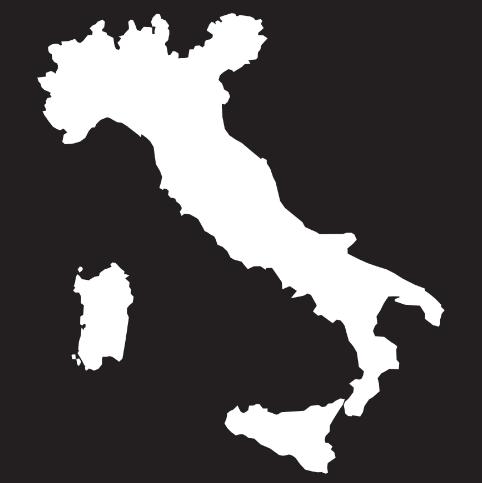

FRANCE
1.


CANADA
1.
2.


LATIN AMERICA
1.
2.
3.

Self-Promotion
Zulu Alpha Kilo
Zulu Alpha Kilo
UNITED STATES
1. McCann NY
2. Dentsu Creative

Germany
1. Serviceplan Germany
2. Leo Burnett GmbH
3. Accenture Song Germany
UNITED KINGDOM
1.
2.


MIDDLE EAST
1.

BELGIUM
1. VML
2. Serviceplan
EASTERN EUROPE
1. McCann Poland
2. ANGRY agency - Ukraine
3. Saatchi & Saatchi Ukraine
EURASIA
1. FCB Artgroup Almaty - Kazakhstan
2. Endorphin - Azerbaijan
3. Synthesis - Uzbekistan
SCANDINAVIA
1.

ASIA PACIFIC
Top winners:
1. Leo Burnett India
2. TBWA\HAKUHODO Inc.
3. BBDO India
THE EPICA AWARDS TRIBUNE








“It’s


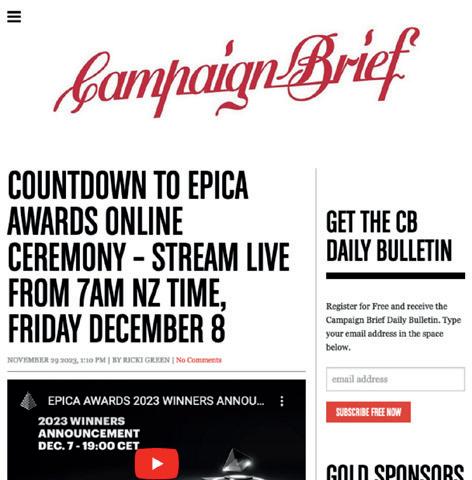

“it
Ali


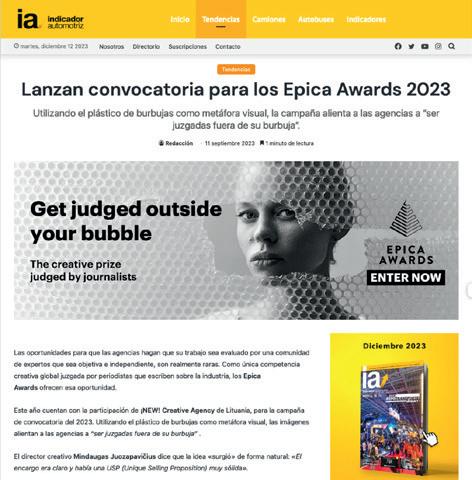








“Epica










As




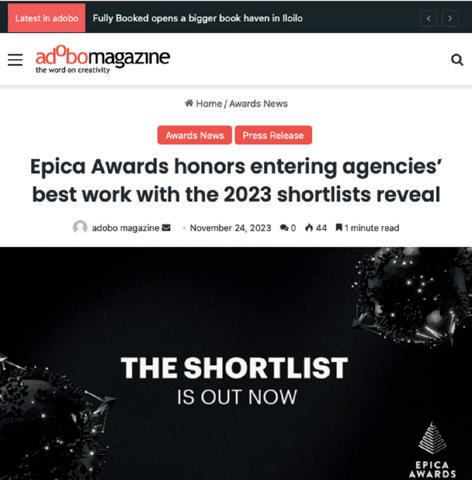














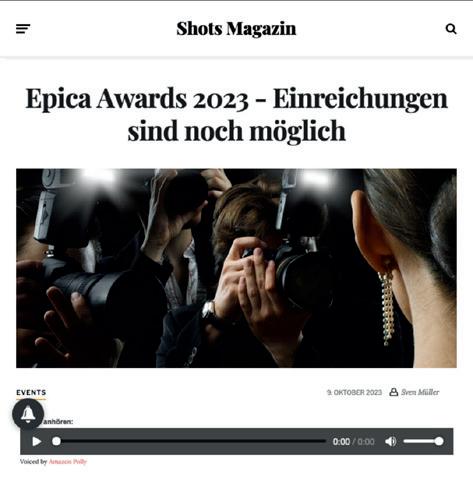


THE EPICA AWARDS TRIBUNE
THE CREATIVE PRIZE JUDGED BY JOURNALISTS






















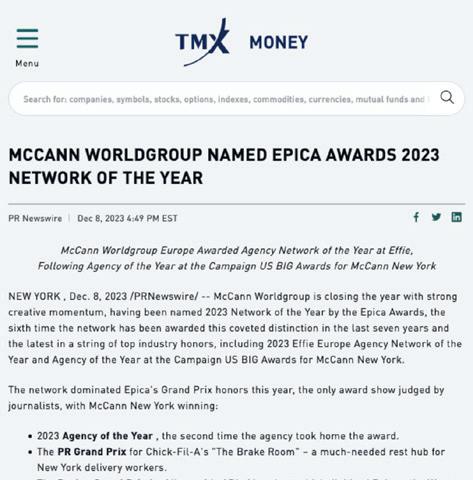










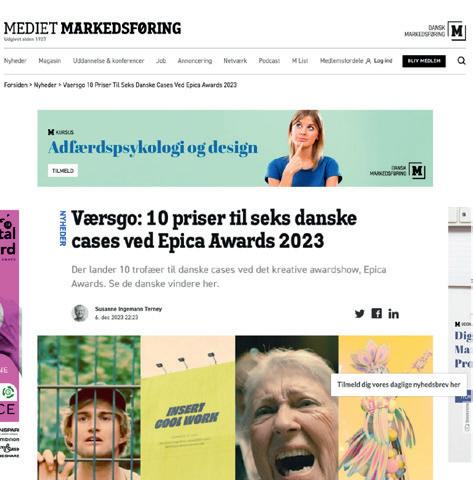








2024 KEY DATES





Nov. 26 CEREMONY
December 7th








True creativity is driven by emotion
The campaigns that shone through in this season’s awards were in touch with the audience’s feelings.
If I had to choose a theme for this past year, I might choose “emotion”. As dramatic headlines about the pace of AI development put Descartes on the table, many of us were prompted to reflect on what makes us human.
In fact, evidence of human emotion was everywhere. As two major conflicts raged, people did not hesitate. They reached out, they donated, they engaged, they marched their outrage onto the streets. This was pure emotion – cold logic had no place in these protests. Logic calculates arms sales. Human beings, most of them, see lives being lost.
Certainly, a lot of organizing and messaging was done via technology – phones and social media – but emotion drove the movement.
The teamwork between technology and humanity often surfaced amid the Epica Awards winners. Take the ADLaM project (McCann NY). Microsoft may have digi-














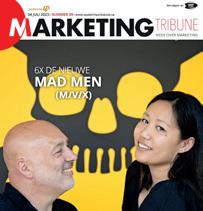









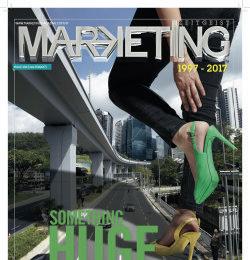























tized a “threatened” alphabet, but the project started out as symbols lovingly drawn in notebooks by two brothers.
Technology again, this time in the form of data, was used to solve the very human problem of migration, as refugees from Ukraine poured into Poland. The result was “Where To Settle” (from MasterCard and McCann Poland).
Undoubtedly one of the most unexpected campaigns of the year, “The Mammoth Meatball” (VML) sprang from an emotional impetus: a desire to create meat that does not involve the slaughter of animals.
Elsewhere, “The Brake Room” (McCann NY) and “The Last Photo” (Hope&Glory) were entirely about caring for and empathizing with others. As Javier Campopiano, McCann’s Worldwide Chief Creative Officer, puts it in our interview with him, whatever technology offers us in the future, “human creativity will always prevail”.


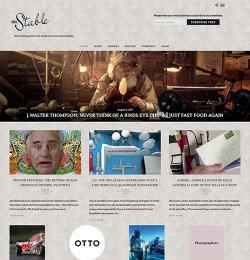






Meanwhile, the creative team behind the Film Grand Prix, “A Train of Memories” (from SIX Inc.) took an entirely analogue approach. While the images of an ageing father and daughter could have been generated by computer, the roles were instead played by multiple actors. At times the difference shows, but this makes the film all the more touching. Its craft is artisanal. (It also reminded me of some scenes from Wim Wenders’ Perfect Days, perhaps the most humane film of 2023.)
We’ve always been adept at fabricating tools that help us in the creative process. I’m typing this on one right now, as my train zips through the countryside. But the spur, the creative idea, begins with emotion.
















